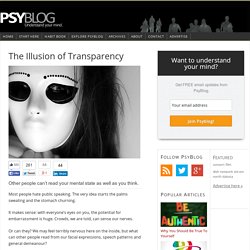

8 Ways to Defeat Persistent Unwanted Thoughts. Repressing thoughts doesn’t work so here are 8 ways to get rid of negative thoughts.

It’s one of the irritations of having a mind that sometimes it’s hard to get rid of negative thoughts. It could be a mistake at work, money worries or perhaps a nameless fear. Whatever the anxiety, fear or worry, it can prove very difficult to control. The most intuitive method to get rid of negative thoughts is trying to suppress them by pushing it out of our minds. Unfortunately, as many studies have shown, thought suppression doesn’t work. So, what alternatives exist to get rid of negative thoughts we’d rather not have going around in our heads? In an article for American Psychologist, the expert on thought suppression, Daniel Wegner, explains some potential methods to get rid of negative thoughts (Wegner, 2011). 1.
The natural tendency when trying to get your mind off, say, a social gaff you made, is to try and think about something else: to distract yourself. The Illusion of Transparency. Other people can’t read your mental state as well as you think.

Most people hate public speaking. The very idea starts the palms sweating and the stomach churning. It makes sense: with everyone’s eyes on you, the potential for embarrassment is huge. Crowds, we are told, can sense our nerves. Or can they? When this is tested experimentally we find an interesting thing. The results showed that people tended to over-estimate just how nervous they appeared to others. In other studies people have been tested trying to hide the lies they are telling, as well as their disgust at a foul-tasting drink and even their concern at a staged emergency. Sometimes simply knowing this can help. Psychologists call this the ‘illusion of transparency’. You can test this illusion by tapping out the rhythm to a song and getting a friend to try and guess what it is.
When this study was carried out, people guessed that those listening would get it about 50% of the time (Newton, 1990; PhD dissertation). Happy Habits: How to Fix Bad Moods. Which do you prefer to get first: the good news or the bad news?

“Imagine that you have two letters in your mailbox. One notifies you that you were caught on camera speeding and must pay a fine. Another is a nice handwritten letter from your best friend who lives in a foreign country. Which one would you prefer to read first?” (Sul et al., 2012) We are forced to make decisions like this all the time. In a new study participants were given pairs of everyday events, both uplifting and depressing, to see how they chose to order the experiences (Sul et al., 2012). Some of the pairs were both uplifting, some both depressing and some mixed, for example: You lost a $250 gift certificate for a department store.You had a good time with some of your friends.
Participants could not only choose the order of the events but also their timing. How Memory Works: 10 Things Most People Get Wrong. Human memory and recall works nothing like a computer, but that’s what makes it all the more fascinating to understand and experience. “If we remembered everything we should on most occasions be as ill off as if we remembered nothing.” ~William James It’s often said that a person is the sum of their memories. Your memory and recall is what makes you who you are. Despite this, memory and recall is generally poorly understood, which is why many people say they have ‘bad memories’.
Here is my 10-point guide to the psychology of memory and recall (it is based on an excellent review chapter by the distinguished UCLA memory expert, Professor Robert A. 1. Everyone has experienced the frustration of not being able to recall a fact from memory. So it seems obvious that memories decay, like fruit going off. 10 Life-Enhancing Things You Can Do in Ten Minutes or Less. Color Psychology. By David Johnson Like death and taxes, there is no escaping color.

It is ubiquitous. Yet what does it all mean? Why are people more relaxed in green rooms? Why do weightlifters do their best in blue gyms? Colors often have different meanings in various cultures. Black Black is the color of authority and power. White Brides wear white to symbolize innocence and purity. Red The most emotionally intense color, red stimulates a faster heartbeat and breathing. The most romantic color, pink, is more tranquilizing. Blue The color of the sky and the ocean, blue is one of the most popular colors. Green Currently the most popular decorating color, green symbolizes nature. Yellow Cheerful sunny yellow is an attention getter. Purple The color of royalty, purple connotes luxury, wealth, and sophistication.
Brown. 10 Instant Emotional Fitness Tools. When things get out of control and you momentarily lose your emotional balance, there are any number of little things you can do to regain it. Here are ten tools to help get you started. 1. Wash your hands and face and brush your teeth. It cools and cleans the parts of your body that you use most frequently, which is relaxing, and gives you that "fresh start" feeling.